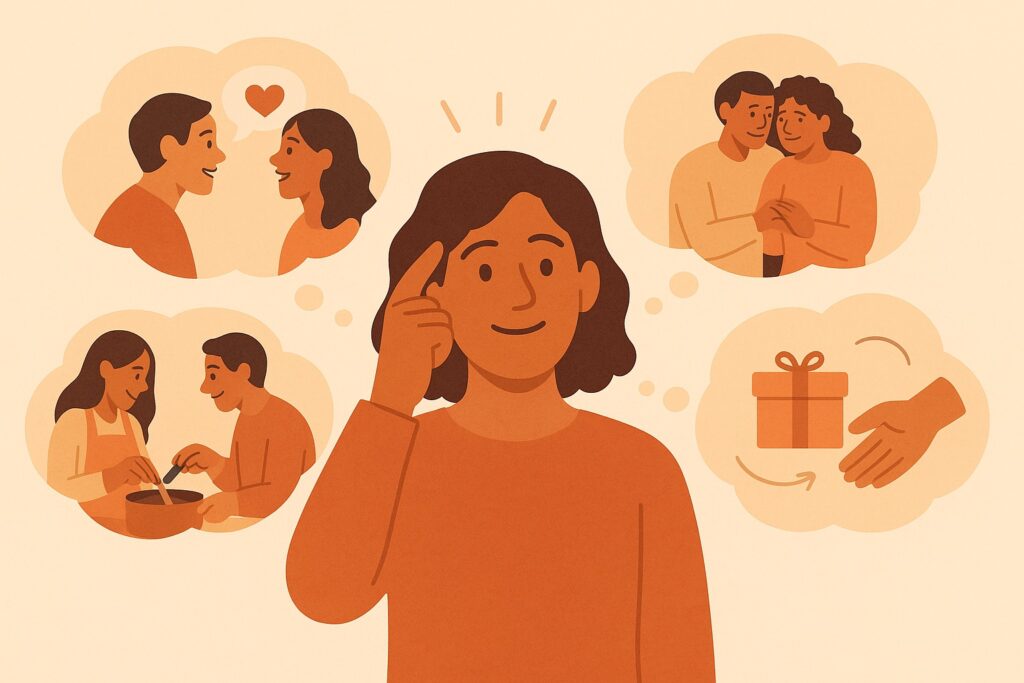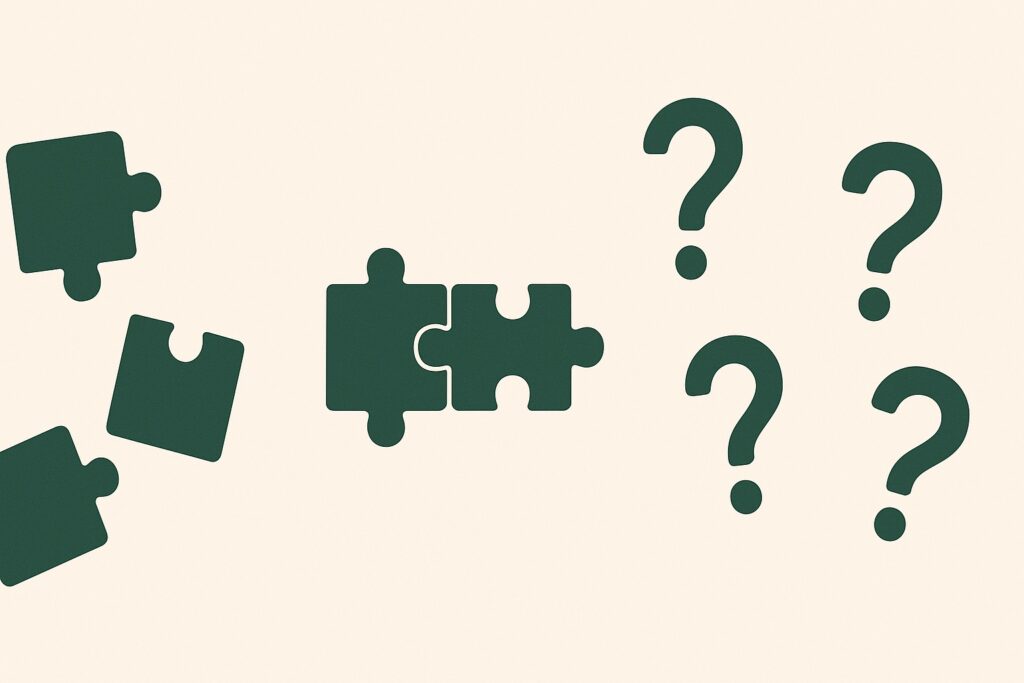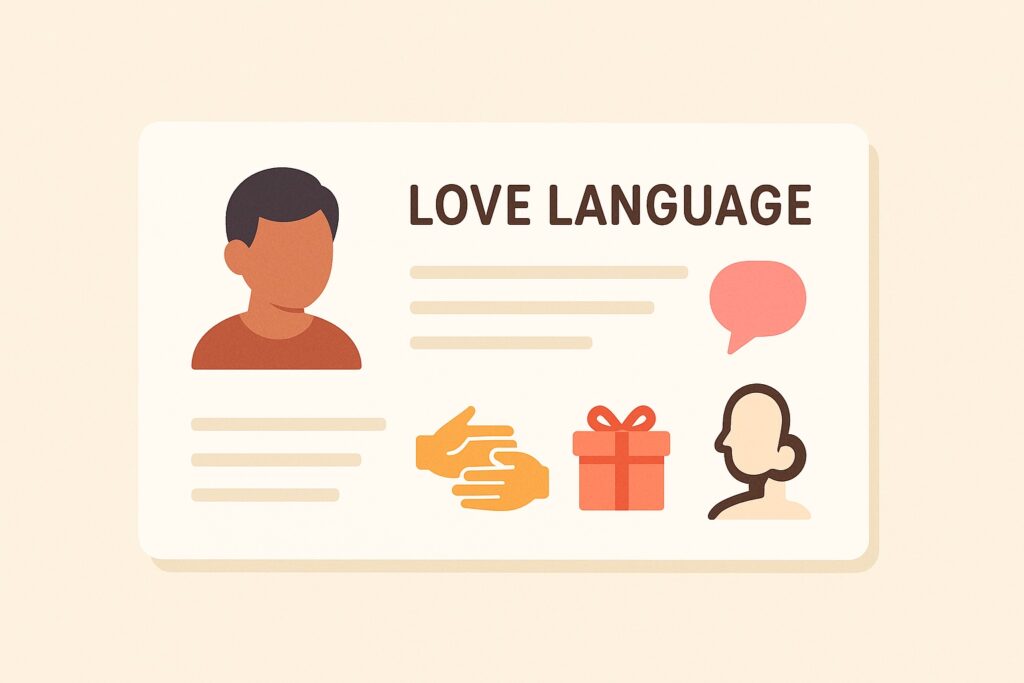How to Find Your Primary Love Language (and Your Partner’s): A Step-by-Step Guide (2025)
Find Your Primary Love Languages (and Your Partner’s)…
“I know my partner loves me, but I just don’t feel it.”
This sentiment echoes through countless relationships where love is present but somehow gets lost in translation. The issue isn’t a lack of caring—it’s that you and your partner might be speaking entirely different emotional languages. While one person shows love through thoughtful actions, the other craves verbal affirmation. One partner gives gifts to express affection, while the other just wants quality time together.
Understanding your primary love language—and your partner’s—can transform how you both give and receive love, creating deeper connection and eliminating the frustrating cycle of loving gestures that somehow miss the mark.
Why Discovering Your Love Language Matters
Before diving into the “how,” it’s important to understand why identifying your love language is crucial for relationship success. As relationship expert Dr. Gary Chapman explains, we each have a primary way we prefer to receive love, and when that “love tank” isn’t filled in the right way, even the most well-intentioned gestures can feel empty.
Research in relationship psychology supports this concept. Studies have shown that partners who understand and actively speak each other’s love language report higher relationship satisfaction and lower conflict rates. The key insight? Love isn’t just about what you give—it’s about ensuring what you give actually lands with emotional impact.
Understanding your love language also helps you communicate your needs more clearly. Instead of saying “You don’t show me you love me,” you can say “I feel most loved when you spend quality time with me without distractions.” This specificity transforms relationship conversations from complaints into actionable requests.
Step 1: Observe Your Natural Reactions

The most telling indicator of your love language often lies in how you naturally respond to different expressions of love. Pay attention to which gestures make you feel most appreciated and connected.
Reflection Questions:
- When do you feel most loved? Think about specific moments when you felt deeply appreciated by your partner, family member, or friend. What exactly did they do?
- What disappointed you most recently? Often, our deepest disappointments reveal what we were hoping to receive. If you felt hurt when your partner forgot to acknowledge your hard work, Words of Affirmation might be important to you.
- What energizes you emotionally? Notice which types of interactions leave you feeling emotionally “filled up” versus drained.
Common Patterns to Notice:
- Words of Affirmation: You light up when someone compliments you, expresses gratitude, or says “I love you”
- Acts of Service: You feel most appreciated when someone helps with tasks, anticipates your needs, or makes your life easier
- Receiving Gifts: Thoughtful surprises, even small ones, make you feel special and remembered
- Quality Time: You feel most connected during uninterrupted conversations or shared activities
- Physical Touch: Hugs, hand-holding, or other appropriate physical affection comforts and reassures you
Step 2: Analyze Your Complaints and Requests

Our relationship frustrations often reveal our unmet love language needs. Listen to the pattern of what you ask for or complain about—it’s usually your love language speaking.
Common Complaint Patterns:
- “You never tell me you appreciate me” → Words of Affirmation
- “You never help me with anything” → Acts of Service
- “You forgot my birthday/anniversary” → Receiving Gifts
- “We never spend time together anymore” → Quality Time
- “You never touch me unless you want sex” → Physical Touch
Take an honest inventory of your recent relationship requests or frustrations. The themes that emerge often point directly to your primary love language.
Step 3: Examine How You Naturally Give Love

We tend to give love in the way we most want to receive it. While this isn’t always perfectly aligned, observing your natural giving patterns can provide valuable clues about your own love language preferences.
Questions to Consider:
- How do you typically show appreciation to others? Do you write thank-you notes, help with tasks, give gifts, plan special time together, or offer physical comfort?
- What do you do when someone is upset? Your instinctive response often reflects your love language—offering encouraging words, helping with practical matters, bringing a small gift, spending time listening, or giving a comforting hug.
- How do you celebrate others? Your natural celebration style often mirrors what would make you feel celebrated.
Step 4: Take the Love Language Assessment

While self-reflection provides valuable insights, a structured assessment can help clarify your love language profile and identify your primary and secondary preferences.
Our comprehensive love language quiz guides you through scenarios and choices that reveal your love language preferences. Unlike simple questionnaires, our assessment considers the nuances of how love languages appear in different relationships and life stages.
The quiz results will show you:
- Your primary love language (usually the strongest preference)
- Your secondary love language (important for complete understanding)
- How your preferences might vary in different relationship contexts
- Practical suggestions for communicating your needs
Remember that most people don’t have just one love language—we typically have a primary preference and one or two secondary languages that also resonate with us.
Step 5: Test Your Hypothesis

Once you have a sense of your likely love language, test it in real-world situations. Ask for what you think you need and observe how it affects your emotional state.
Practical Testing:
- If you suspect Words of Affirmation: Ask your partner to express appreciation verbally for something specific you did. Notice how this impacts your mood and connection.
- If you think it’s Acts of Service: Request help with a specific task that would ease your burden. Pay attention to how supported you feel.
- If Receiving Gifts resonates: Mention something small you’d enjoy receiving, then notice your emotional response when you receive it.
- If Quality Time seems right: Schedule uninterrupted time together and observe how it affects your sense of connection.
- If Physical Touch feels important: Increase appropriate physical affection and notice how it impacts your emotional security.
Discovering Your Partner’s Love Language

Understanding your partner’s love language is equally important for relationship success. Here’s how to discover it:
Observation Strategy:
- Listen to their complaints: What do they consistently ask for or express frustration about not receiving?
- Notice their requests: What do they most often ask you to do for them?
- Watch their giving patterns: How do they naturally show love to you and others?
- Observe their reactions: What makes them light up versus what falls flat?
Direct Conversation Approach:
Have an open conversation about the five love languages concept. Share what you’ve learned about your own preferences and ask about theirs. Questions to explore together:
- “When do you feel most loved by me?”
- “What’s something I could do more often that would make you feel appreciated?”
- “What kinds of gestures or actions make you feel most connected to me?”
- “Is there something I do that really makes you feel cared for?”
The Experimental Method:
Try expressing love in different languages for a week each and observe your partner’s response:
- Week 1: Focus on verbal appreciation and encouragement
- Week 2: Emphasize helpful actions and service
- Week 3: Give small, thoughtful gifts or surprises
- Week 4: Prioritize quality time and undivided attention
- Week 5: Increase appropriate physical affection
Notice which weeks generate the most positive response, gratitude, or emotional connection.
Common Discovery Challenges and Solutions

Challenge 1: “I think I need all five love languages”
Solution: While we appreciate all expressions of love, most people have one or two that create the strongest emotional impact. Consider which languages, if missing, would leave you feeling unloved even if the others were present.
Challenge 2: “My partner’s love language doesn’t feel natural to me”
Solution: This is completely normal and actually common in relationships. Learning to “speak” your partner’s love language is like learning any new skill—it takes practice but becomes more natural over time. As research shows, successful couples develop skills in expressing love in ways that resonate with their partner.
Challenge 3: “Our love languages keep changing”
Solution: Love language preferences can shift with life circumstances, stress levels, and personal growth. Major life transitions—like becoming parents, career changes, or health challenges—may temporarily or permanently alter love language needs. Regular check-ins help couples stay connected through these changes.
Challenge 4: “We have the same love language”
Solution: While this might seem ideal, couples with the same primary love language can sometimes neglect the other expressions of love or assume their partner always wants exactly what they want. Continue to communicate specifically about preferences and don’t forget to appreciate the full spectrum of love languages.
Making Love Language Discovery a Relationship Strength
Once you’ve identified your love languages, the real work begins: consistently speaking each other’s language while also teaching your partner how to speak yours.
Creating a Personal Love Language Profile:

Document what you’ve learned:
- Primary Love Language: [Your strongest preference]
- Secondary Love Language: [Your second preference]
- Specific Examples: What actions within your love language resonate most strongly?
- Context Variations: Does your love language preference change in different situations or relationships?
- Communication Preferences: How do you like to express and receive feedback about love language needs?
Developing a Couple’s Love Language Strategy:
- Regular Check-ins: Schedule monthly conversations about how well you’re both feeling loved and appreciated
- Specific Requests: Practice making clear, specific requests rather than vague complaints
- Appreciation Practice: Regularly acknowledge when your partner speaks your love language effectively
- Patience with Learning: Expect a learning curve as you both develop fluency in each other’s languages
Beyond the Couple: Love Languages in All Relationships
Understanding love languages extends far beyond romantic partnerships. These principles apply beautifully to:
- Parent-child relationships: Children have love languages too, and speaking their language can strengthen family bonds
- Friendships: Knowing how your friends prefer to receive appreciation can deepen connections
- Professional relationships: Understanding colleagues’ and employees’ appreciation styles can improve workplace dynamics
- Self-relationship: Knowing your own love language helps you practice better self-care and meet your own emotional needs
Red Flags: When Love Language Discovery Goes Wrong
While learning about love languages is generally positive, watch for these warning signs:
- Manipulation: Using someone’s love language to control or pressure them
- Weaponizing: Withholding someone’s love language as punishment during conflict
- Excuse-making: Using different love languages to avoid addressing deeper relationship issues
- Rigidity: Insisting on only receiving love in your primary language and refusing to appreciate other expressions
Healthy love language application always includes mutual respect, genuine care, and recognition that love languages are tools for connection, not control.
When Professional Help May Be Needed
If discovering and applying love languages doesn’t improve your relationship satisfaction, consider that other factors might be at play:
- Deep-seated trust issues that require rebuilding
- Communication patterns that need professional guidance
- Individual mental health challenges affecting relationship capacity
- Fundamental incompatibilities that extend beyond communication styles
Relationship counselors trained in love languages can help couples navigate complex dynamics and develop personalized strategies for connection.
Taking Action: Your Next Steps

Understanding your love language intellectually is just the beginning. The transformation happens when you put this knowledge into consistent practice.
This Week:
- Complete the love language assessment to confirm your discoveries
- Have one conversation with your partner about love languages
- Make one specific request based on your love language needs
- Try speaking your partner’s love language in one small way daily
This Month:
- Implement regular love language check-ins with your partner
- Practice giving and receiving feedback about love language expressions
- Apply love language insights to one other important relationship
- Reflect on changes in your relationship satisfaction and connection
Long-term:
- Reassess periodically as life circumstances change
- Teach the concept to other couples or family members who might benefit
- Continue learning about relationship communication and emotional connection
Conclusion: The Journey of Speaking Love Fluently
Discovering your love language—and your partner’s—isn’t a one-time event but an ongoing journey of learning to love each other more effectively. It’s about moving beyond the assumption that everyone experiences love the same way you do and embracing the beautiful diversity in how we give and receive affection.
The goal isn’t perfection but progress. Every time you notice your partner’s love language in action, every moment you speak their language even when it doesn’t come naturally, and every conversation you have about loving each other better, you’re building a stronger, more connected relationship.
As you continue this journey, remember that understanding the fundamentals of all five love languages provides the foundation for speaking love fluently in all your relationships. The investment you make in learning these languages will pay dividends not just in your romantic relationship, but in every meaningful connection in your life.
Ready to Discover Your Love Language?
Take our comprehensive love language quiz to get personalized insights into your unique love language profile. You’ll receive detailed results explaining your primary and secondary love languages, along with practical suggestions for communicating your needs and connecting more deeply with the important people in your life.
Discover Your Love Language Now
Curious about how love languages apply in specific relationship contexts? Explore our other resources on love languages in families, friendships, and professional settings to build stronger connections everywhere in your life.


Leave a Reply